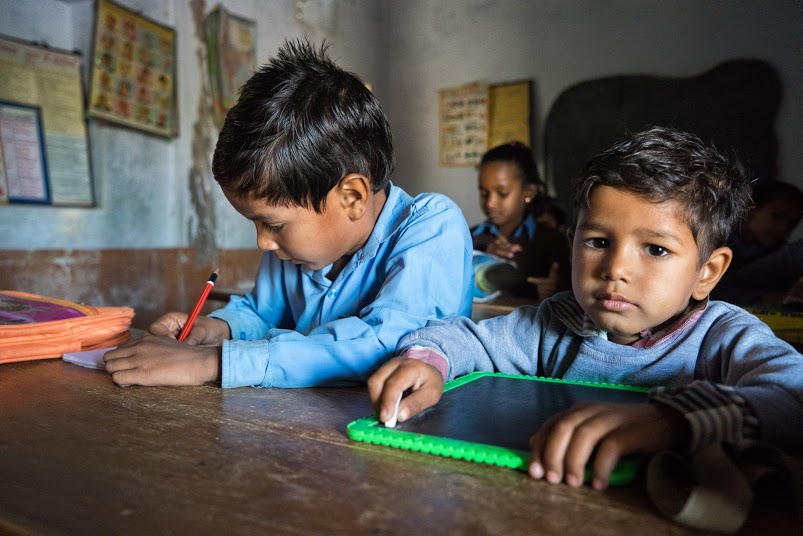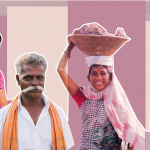
Superheroes in school uniforms
5 February 2016
“Didi, who’s your favourite super hero?” asked the six year old as he played with a toy figurine of the Incredible Hulk. “It would have to be Mulan,” I replied after giving it some thought. “But Mulan doesn’t have superpowers!” “But she single handedly saves China.” “Yes, but she doesn’t have alien powers that make her do amazing things! She’s just a human,” he countered.“Well, yes, but by that measure, Batman can’t be called a superhero either. He relies on his gadgets to beat the bad guys.” “He is powerful on his own…he can beat up anyone without relying on his gadgets. Mulan can’t do that.” “She uses the power of her mind to beat the baddies! What is greater? Brute force or mental strength?!…”
The banter went on for some more time.[1] In the end he seemed to agree with me but I am afraid he wasn’t entirely convinced. It did however spark my imagination regarding the typical notion of a superhero. I had been mulling over the stories I had heard that day, shared by teenaged girls attending a scholarship camp in Araria, Bihar, when this impromptu verbal joust took place.
The scholarship programme was launched four years ago by a dear friend to motivate teenaged girls to complete their schooling. Attending these bi-annual workshops was a requirement to attain the scholarship. In these workshops, girls were informed about various things including their body and health, relationships, navigating social inequalities, peoples’ struggles and their rights. For most girls, this had been the fourth and final camp in the last two years. One of the things we had struggled with during our time with the girls was just getting them to talk. So this time round, we focused on motivating them to share their stories. And I’m so glad we could get all of them to open up. We ended up hearing some truly inspiring stories. Made me realise how the “super-ness” of a person came out in (seemingly) ordinary acts of extraordinary courage.
There was the story of Jaya[2] who at the age of 16 just wanted to learn something in school. She would cycle, take the train and walk to cover the 22 KM between her home and school. But the teachers refused to teach, even though they were present in school. They would tell her to go back and take up tuitions like the other kids. She persisted. This eventually impressed her headmaster. “But we cannot teach one student alone, Jaya,” the headmaster told her. Jaya ended up motivating around 15 girls including her friends and some seniors from the neighbouring village to accompany her. The teachers could no longer turn the students away. They started teaching but not without making things difficult for them, occasionally. For instance, some teachers would get the students to move all the classroom furniture outside, including the stick used to “discipline” them, so they could teach more comfortably.
Then there was Sonali. The girl who was eyed suspiciously; her motives questioned by her neighbours for attending this residential workshop, twice in a row. She didn’t bow down and ended up holding a session with the village folk, telling them about the activities of the group that was organizing the workshop. She generated enough buzz that the village ended up inviting some of the group’s leaders to resolve issues affecting them. She herself became a full time volunteer with the group, organizing day long camps for kids of her village, playing games, screening movies and informing them about their rights.
And how can I forget Noor. She was one of the quietest girls from the batch of 20 odd girls. She learnt sewing at the age of eight, watching her mother sew blouses. She has been sewing blouses ever since, charging Rs 40 per piece. She shared her ambition to learn sewing suits and opening her own tailoring shop in the near future. “This will secure my family’s future once and for all,” said Noor, eyes agleam;the timidity melting away in front of our eyes.
I looked on as the six year old went back to playing with his toy, my mind wandering off to all those girls who are brave enough to pursue their schooling in a region where underage marriage is still the norm. The average 14 year old in this district spends considerable time cooking up ways to ward off families that might visit her home on any given day to see if she could make for a good wife for their son(s). Whether her own family wishes to marry her off is a question that does not particularly interest anyone outside her immediate family. The constant fear is if a family is turned away for an unsatisfactory reason or a string of families are turned away, any of the rejected parties could spread malicious stories about the girl or the family in the village. Since villages continue to be tightly knit social units, the repercussions might prove too costly for the girl’s family. But having understood the value of education, these girls go on, keeping an eye out for their grades as well as their house guests.
We really need to alter our definition of a superhero. I hope this bright and sensitive six year old grows up in a world that accommodates superheroes possessing all sorts of skills, come in all shapes and genders, and not just lumbering, angry green men. And I hope the girls from Araria are at the forefront, inspiring other young girls and boys to pursue their education, their dreams, and ultimately bring about this change.
[1] The author will be happy to share her take on why she thinks Mulan should be counted as a superhero with interested readers. She can be contacted at [email protected]
[2] Names have been changed.





